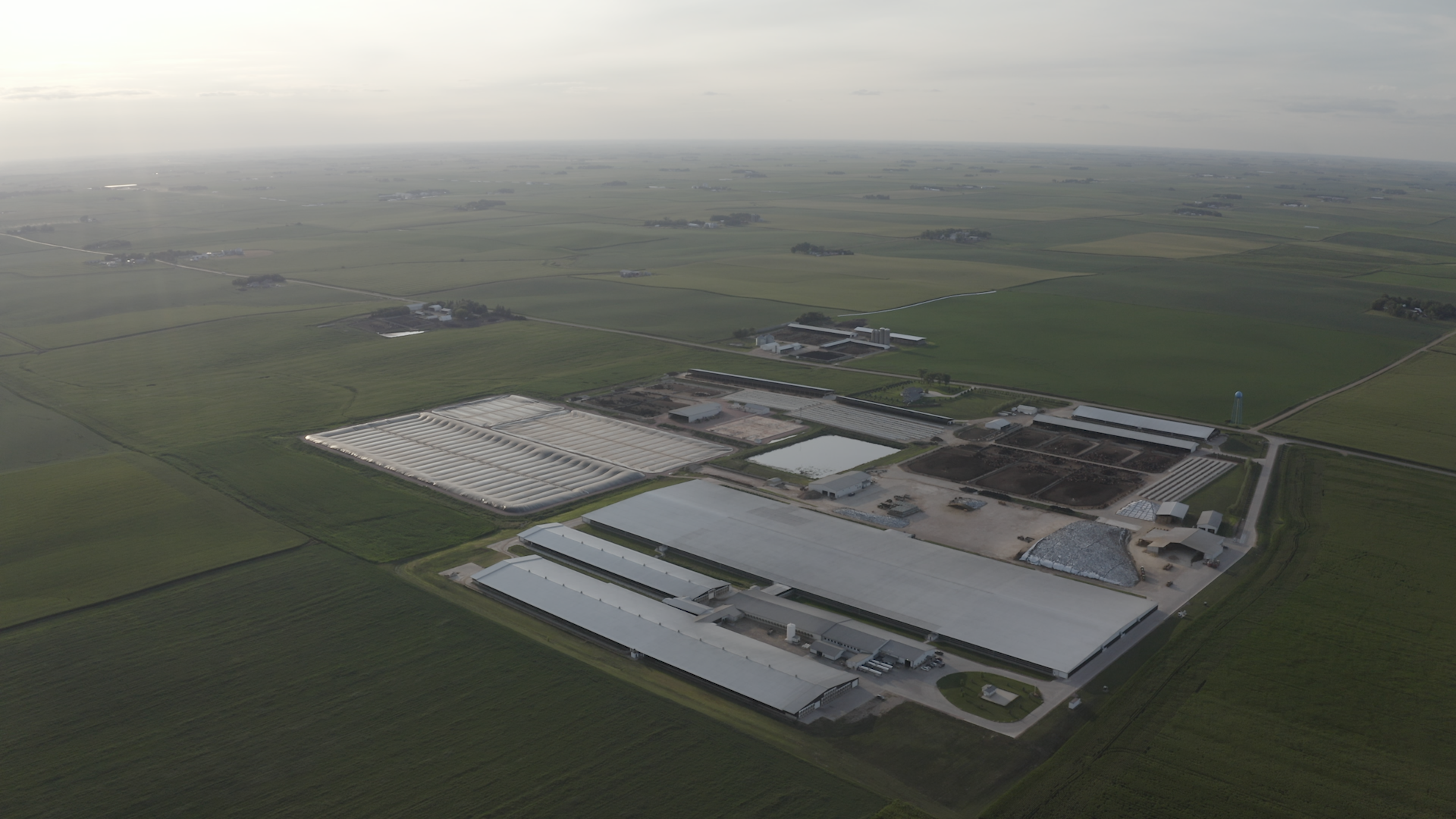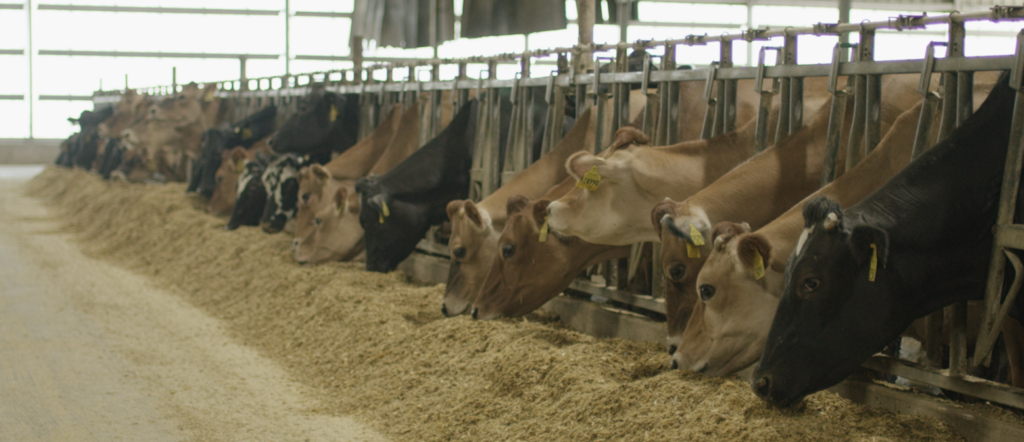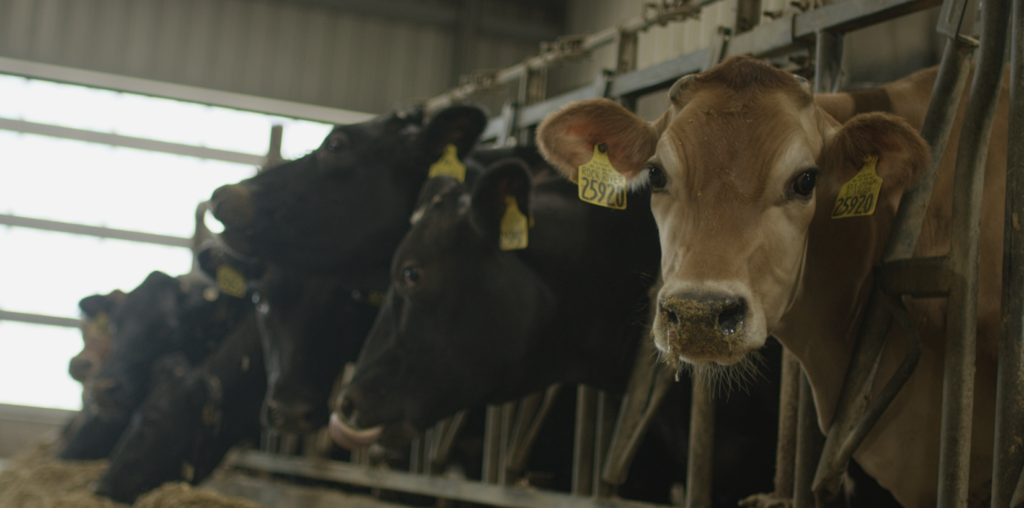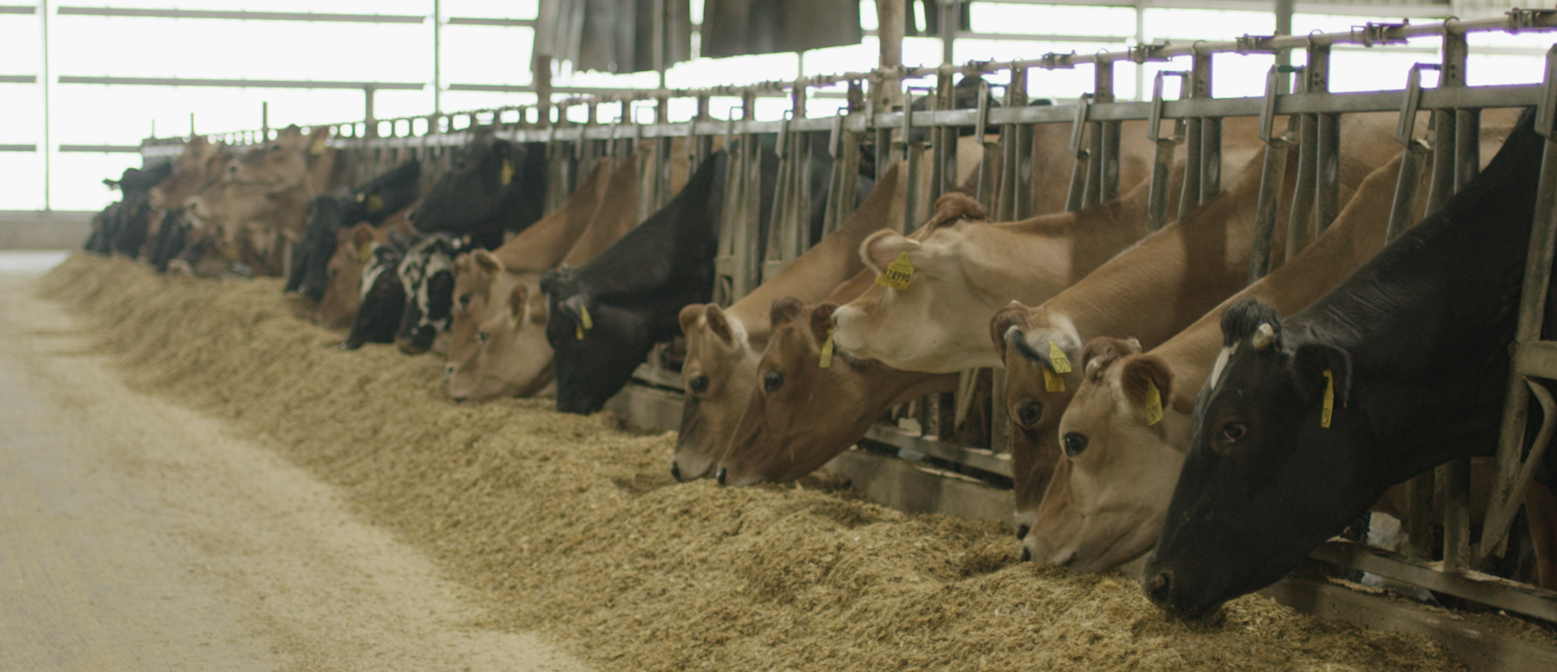Gevo generates renewable natural gas, or RNG, by collecting manure from dairy farms. This concept fits in with our philosophy of addition by subtraction: We simultaneously seek to reduce waste as we figure out ways to generate usable renewable energy from the process.
According to Our World In Data, food production uses incredible amounts of energy and resources, including livestock and fish farms. Livestock contributes to pollution in a few different ways:
- Enteric fermentation is gas produced by microbes in the digestive system of livestock animals, chiefly methane. It is emitted through belching and flatulence, and this usually increases when the animals are fed starchy food.
- Manure management contributes to pollution as well. Dairy manure is stored in lagoons until it can be injected into the soil of neighboring fields where it is used for fertilizer. While it is being stored, the manure naturally starts breaking down, thus releasing methane into the atmosphere.
- Management of pastureland is also a factor, as the ground emits carbon dioxide.
Renewable Natural Gas Can Help Reduce Greenhouse Gas Emissions
Renewable natural gas is expected to be a key renewable energy source for transportation needs. RNG-fueled vehicles result in less pollution in urban centers, improving health conditions for the area populations, better than those fueled by gasoline or diesel. RNG is proving to be a key fuel in the energy transition.
Capturing Energy on the Farm
By installing anaerobic digesters on dairy farms, we will capture vast quantities of manure generated in an enclosed structure. Using complex microbial communities to break down the manure, the digesters capture the methane gas that would otherwise go into the atmosphere. Why waste it? This biogas is an energy source that comes from natural processes that have captured carbon from the atmosphere.
Cows and other livestock eat plants. Any corn, hay, grass, or other plant matter—which may include Gevo’s high-protein animal feed—that the animal consumed has grown into plant matter, thanks to photosynthesis. The animal processes the feed to get its own energy to move around, produce milk, etc., and this carbon system adds critical protein and nutrients to the food chain.

Livestock, however, doesn’t use up all the nutrients contained in its feed sources. Many important nutrients remain in the manure. These nutrients persist in the manure after it comes out of the digester. This manure can be spread on farm fields to replenish the soil, obviating the need for synthetic inputs, saving the farmer money while also eliminating still another source of pollution.
RNG Creates Clean Energy and the Promise of Marketable Carbon Abatement

Carbon abatement is coming, and it will become an important factor in the decisions that are made every day up and down the supply chain for some businesses.
Of course, the RNG itself has carbon-abatement value, and some programs will readily add any additional factors that show reduced carbon emissions. Two examples are California’s Low Carbon Fuel Standard (“LCFS”) program and the U.S. Environmental Protection Agency’s Renewable Identification Number (“RIN”) program.
Dairy farmers who partner with us and install manure digesters could reap benefits from RNG production, since this added factor would be expected to improve the farms’ overall efficiency. At the very least these digesters will lay the groundwork for more efficient recycling of nutrients and better soil health.
Farms that install digesters will have an additional product to sell. If product attributes are tracked like we think they will be, and using the Argonne GREET model or a similar model that tracks carbon over the entire lifecycle of products including their supply chain, then farms that reduce the lifecycle inventory of their products can pass that benefit on to their customers that track such metrics.
In the case of a dairy farm, the milk from a farm that uses manure digestion to reduce its carbon intensity could be more valuable to a cheese or ice cream manufacturer who wants to sell sustainably sourced and produced products to its customers. The farmer gets a higher price for milk output per gallon because it has the added sustainability value that has been verified.
How Gevo Uses Clean Energy

Every Btu of RNG and every gallon of energy-dense liquids, including sustainable aviation and renewable gasoline, and even every pound of green hydrogen, that Gevo expects to sell into the market could eliminate of the equivalent of the fossil fuels burned. Gevo is developing plans to use biogas, utilizing an on-site anerobic digester (like a water treatment plant) to heat or otherwise power its production facility. Every Btu or Watt of energy used in our production that can be supplied by renewable energy sources is one more factor that improves our efficiency. This is why Gevo has chosen to utilize clean sources for both the thermal demands of the plant (biogas) and the electrical demands (wind).
Our lifecycle analysis will show one piece of our sustainability metrics, and could then be shared with our customers, some of whom have their own customers who pay source products based on enhanced carbon abatement. Our energy-dense liquids and RNG products are being designed to store renewable energy in ways that it can be readily adapted to today’s vehicles, aircraft, boilers, furnaces, and fuel transportation and storage infrastructure.
